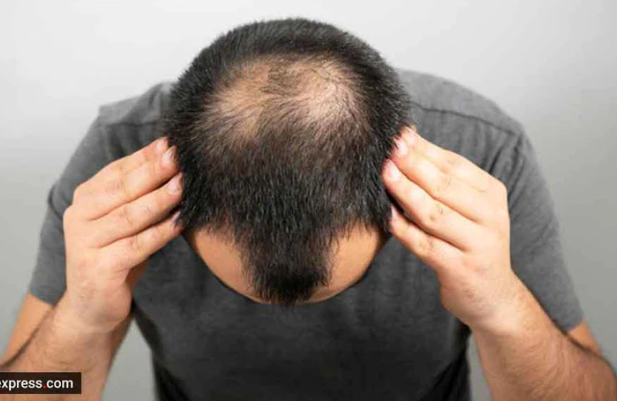
According to the American Hair Loss Association, nearly two-thirds of men will experience some degree of hair loss by the time they are just 35 years old. This is 6 Best Treatments for Severe Hair Loss!
By the time men are 50 years old, that portion can increase to 85%.
It is almost impossible to avoid this problem, as genetics plays a key role in hair loss.
Read: Vitamins That Are Good For Hair Loss and Thin
In addition, there are other factors that can contribute, including hormones, medications, stress, certain hairstyles, and even other hair treatments.
Even today as we age, there are some powerful hair loss treatments that can help slow down and sometimes even reverse the process.
6 Best Treatments for Severe Hair Loss

What Causes Hair Loss?
There are several reasons why you might experience hair loss, but the most common cause is genetics.
Male pattern baldness is also known as androgenic alopecia, which is a hereditary condition.
Read: These are the 10 Best Vitamins For Adult Men [Complete!]
While this condition may begin as early as puberty, it generally develops later in life, starting in men in their 30s and 40s.
This often occurs gradually and in a predictable pattern, with the front hairline and the center of the scalp thinning.
Furthermore, genetics also plays a role in how fast, at what age, and how severe your hair loss is.
Men with pattern baldness inherit hair follicles that are highly sensitive to dihydrotestosterone (DHT), a hormone that shortens and weakens the lifespan of individual hair follicles.
Many treatment techniques focus on depleting DHT in the body or on the scalp, leaving only a few available to weaken hair follicles, while others focus on providing more blood to active hair follicles.
Other possible causes of hair loss include:
Hair pulling disorders
This mental health condition, known as trichotillomania, involves a person having a repetitive and irresistible urge to pull hair from the scalp, eyebrows, or other areas.
They may not even realize they are doing it.
Hairstyles or treatments
Continuously pulling hair or treating it with harsh chemicals such as dyes or bleaches repeatedly can cause temporary and even permanent hair loss.
Hormonal imbalance
Dramatic changes in hormones can cause temporary hair loss. For men, the thyroid gland is the most common cause of hair loss due to hormonal fluctuations.
Medications
There are certain medications that may have a side effect on hair loss.
Natural triggers
Stress or trauma extremes can cause hair loss. Often, this type of thinning will go away when the trigger event has resolved.
Uneven hair loss
Also known as alopecia areata, this type of hair loss can occur when the body's immune system attacks its own hair follicles.
This can cause sudden and rapid hair loss which will leave fine, round, bald patches on the skin.
Cancer
If a person has to receive chemotherapy or other types of radiation treatment near the scalp, hair may fall out and grow back differently than before.
Scalp infection
Infections such as ringworm, or tinea capitis, can affect the hair and scalp, which can lead to scaly patches and hair loss.
Skin disorders
Certain diseases such as psoriasis and lupus can cause permanent hair loss in the area of the scar.
7 Ways to Treat Hair Loss Naturally
Among the following tips actually depending on the root cause of your hair loss, results may vary with treatment. Here's the list:
#1: Eat Healthier Foods

The first best hair loss treatment is to eat healthy foods.
Eating a balanced diet can help keep your hair healthy and strong.
Obesity and metabolic disorders are known to contribute to hair loss, and a healthy diet can help avoid this common affliction in men.
Include a variety of vegetables, fruits, whole grains, unsaturated fats, and lean protein while limiting the amount of sweets. Certain vitamins and minerals are generally very good at treating damaged hair.
If you are not already eating these foods, consider adding more green leafy vegetables, seafood, and eggs to your diet.
In addition, it is important to ensure that you are drinking enough water to keep your body and scalp properly hydrated.
#2: Try Finasteride
Finasteride is the only oral medication approved by the FDA to treat male pattern baldness, which often appears on the crown and middle of the scalp.
Although originally created to treat prostate cancer, finasteride works by reducing the amount of the hormone DHT in the body.
DHT causes the hair follicles on the scalp to become thinner and weaker with prolonged exposure, ultimately preventing them from growing hair at all.
By lowering the levels of DHT in your body with finasteride, hair growth can be increased and hair loss can be slowed down.
Finasteride is one of the most effective treatments for hair loss in men, with decades of success stories and clinical research supporting its abilities. This is a recipe, but affordable and easy to order.
#3: Go to the Doctor The
the next treatment for male hair loss is to go to the doctor.
While this may not directly treat hair loss, there are several medical conditions that can cause hair loss.
Having regular checkups can help you determine the cause of your hair loss. Treating the underlying condition can reverse the effects if caught early enough.
- Alopecia areata
- Diabetes
- Eating Disorders
- Iron deficiency
- Thyroid problems
- Trichotillomania
- Scalp psoriasis
- Vitamin D deficiency (Purity Sun Vitamin D3 1000IU 90 Tablets)
In addition, your doctor can help determine if there are other medications you can take to relieve your hair loss, and whether alternatives or different doses might help.
#4: Try Minoxidil

Although it was originally developed to treat high blood pressure, developers discovered that minoxidil has the side effect of excessive and unwanted hair growth.
As a result of this surprising development, several manufacturers are trying to test it for hair growth tests in both men and women.
Minoxidil works and has been around for nearly thirty years helping men slow down and stop hair loss when applied topically.
It's not known exactly how minoxidil works, but the drug appears to increase blood flow and oxygen to the follicles, which can cause thicker strands of hair to grow.
In addition, minoxidil can prolong the growth period of hair follicles, which can result in longer hair and a greater number of strands.
Minoxidil has many clinical studies that support its use and efficacy on both male and female hair.
#5: Relax
Stress can have a severe impact on your overall physical health, including your hair. Hair loss can be the result of a stressful lifestyle.
Doing more exercise, yoga, hobbies, or getting into therapy can all help reduce your stress.
It's also important to get enough sleep, as adults who sleep less than eight hours a night often report higher stress levels than those who sleep eight hours a night or more.
#6: Quit Smoking
While you may be aware of all the negative effects smoking has on your lungs, you may not know that smoking can also cause hair loss.
Research has found a clear link between smoking and hair loss, so if you currently smoke, quitting as soon as possible can help slow or stop hair loss.
#7. Shampoos and Conditioners
Another option for dealing with hair loss are over-the-counter shampoos and conditioners that contain natural ingredients with DHT-fighting abilities.
Choose shampoos and conditioners that contain good ingredients to treat and maintain the health of your hair.
Conclusion
To deal with hair loss, the most important thing is to find out what is causing your hair loss.
Lifestyle changes and treatments such as minoxidil and finasteride are effective in treating male pattern baldness.
Meanwhile, over-the-counter options like shampoos or conditioners that fight DHT in your scalp can also help you deal with hair loss.
The first step in treating hair loss is to find out the root cause.
For most men, hair loss is purely genetic. Whatever the cause, you have a choice. Treat it or leave it.










